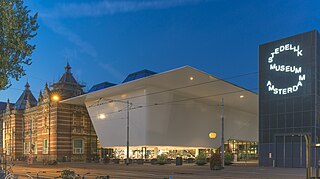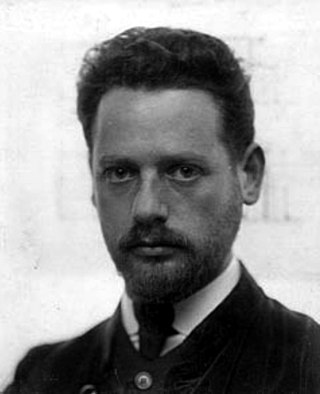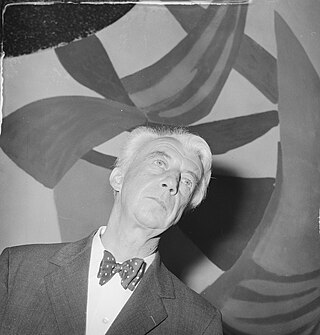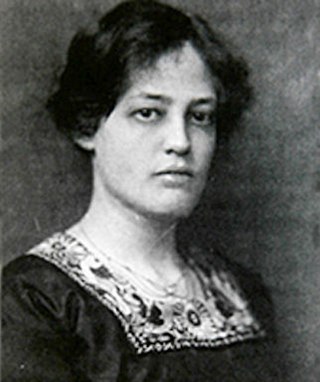
The Stedelijk Museum Amsterdam, colloquially known as the Stedelijk, is a museum for modern art, contemporary art, and design located in Amsterdam, Netherlands.

The Amsterdam School is a style of architecture that arose from 1910 through about 1930 in the Netherlands. The Amsterdam School movement is part of international Expressionist architecture, sometimes linked to German Brick Expressionism.

Willem Hendrik "Wim" Crouwel was a Dutch graphic designer, type designer, and typographer.

Michel de Klerk was a Dutch architect. Born to a Jewish family, he was one of the founding architects of the movement Amsterdam School

Piet Zwart was a Dutch photographer, typographer, and industrial designer.

Hendrik Nicolaas Werkman was an experimental Dutch artist, typographer, and printer. He set up a clandestine printing house during the Nazi occupation (1940–1945) and was shot by the Gestapo in the closing days of the war.

Wendingen was an architecture and art magazine that appeared from 1918 to 1932. It was a monthly publication aimed at architects and interior designers. The booklet was published by Amsterdam publisher Hooge Brug (1918–1923) and by the Santpoort publisher C.A. Mees (1924–1931). It was a mouthpiece for the architect association Architectura et Amicitia.. The chief editor was the architect Hendricus Theodorus Wijdeveld. Wendingen initially was an important platform for Dutch expressionism, also known as the Amsterdam School, and later endorsed the New Objectivity.

The Netherlands Architecture Institute (NAI) was a cultural institute for architecture and urban development, which comprised a museum, an archive plus library and a platform for lectures and debates. The NAI was established in 1988 and was based in Rotterdam since 1993. It ceased to exist in 2013, when it became part of Het Nieuwe Instituut.

Jonkheer Willem Jacob Henri Berend Sandberg known as Willem Sandberg was a Dutch typographer, museum curator, and member of the Dutch resistance during World War II.

Willem Hendrik Gispen was a Dutch industrial designer, best known for his Giso lamps and serially produced functionalist steel-tube furniture.

Hendrik Wouda was a Dutch architect and furniture designer. He designed furniture, lighting and interiors for homes, offices, ships and exhibitions. His work is characterized by a strongly marked simplicity, a cubic joining together of volumes, well-balanced spatial effects and a practical division of the floor-plan. He also practiced independently as an architect.

The Plan Zuid is an urban development plan of Amsterdam South in the city of Amsterdam, Netherlands, designed by architect Hendrik Petrus Berlage. Berlage was responsible for the urban concept (1915) and the architects of the Amsterdam School designed the implementation of the plan.
Petra Blaisse is a British-born Dutch designer. Her work is an intersection of the professions of architecture, interior architecture, landscape architecture, textile design, and exhibition design.

Margaret Staal-Kropholler, frequently referred to as Margaret Kropholler, was the first woman in the Netherlands to practice as a professional architect.
Benthem Crouwel Architects is a Dutch architectural firm founded in 1979 by Jan Benthem and Mels Crouwel. Today, partners Pascal Cornips, Daniel Jongtien, Saartje van der Made and Joost Vos lead an international team of 60 professionals at the Amsterdam based Benthem Crouwel LAB. They work on projects from Amsterdam, Paris and California.

Han Schuil is a Dutch multimedia artist, who works in a Dutch tradition of compactness and tension in painting.
Karel Martens is a Dutch freelance graphic designer, specialized in typography

Karel Petrus Cornelis de Bazel was a modern Dutch architect, engraver, draftsman, furniture designer, carpet designer, glass artist and bookbinding designer. He was the teacher of Adriaan Frederik van der Weij and the first chairman of the Bond van Nederlandse Architecten, beginning in 1909.

Jan Frederik ("Frits") Staal, was a Dutch architect, and a major figure in the development of modern architecture in the Netherlands in the first half of the twentieth century. He was the father of the architects Arthur and Georges Staal and the linguist and South Asia scholar Jan Frederik Staal.

Rein Jansma was a Dutch architect and co-founder of the architectural studio ZJA.



















